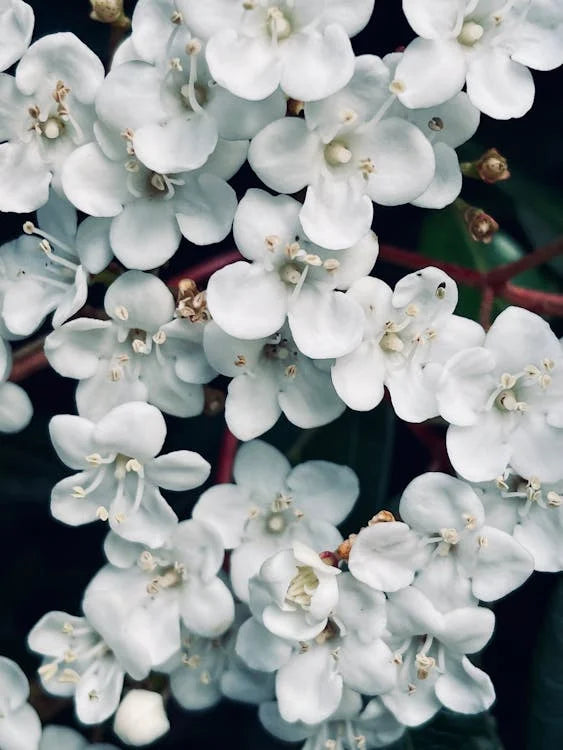
Background and history of the Viburnum tinus
Share
The Viburnum tinus has a rich history that goes back to the Mediterranean region, where it originally grew wild. In this region, the plant symbolized strength and protection, which probably has to do with its hardy and evergreen nature. It was often planted in monastery gardens and along walls to create a sense of security.
The name “Viburnum” refers to an old Latin name for a type of shrub, while “tinus” specifically designates this species. In ancient texts, the Viburnum tinus is praised for its graceful flowers and medicinal properties. For example, it was used in traditional remedies for skin problems and respiratory diseases.
Over the centuries, Viburnum tinus has become increasingly valued as an ornamental plant in gardens. Its ability to remain beautiful all year round and its winter flowering make it a favourite in temperate climates.
What makes this plant extra special is its role in the ecosystem. The flowers provide an important food source for pollinators in late winter and early spring, when other plants are still dormant. In addition, the berries are a popular snack for birds, making it perfect for a wildlife-friendly garden.
With its rich history and versatile uses, Viburnum tinus remains a popular choice for gardeners looking for an evergreen shrub with character. Whether you are a beginner or an experienced gardener, this plant never disappoints.
